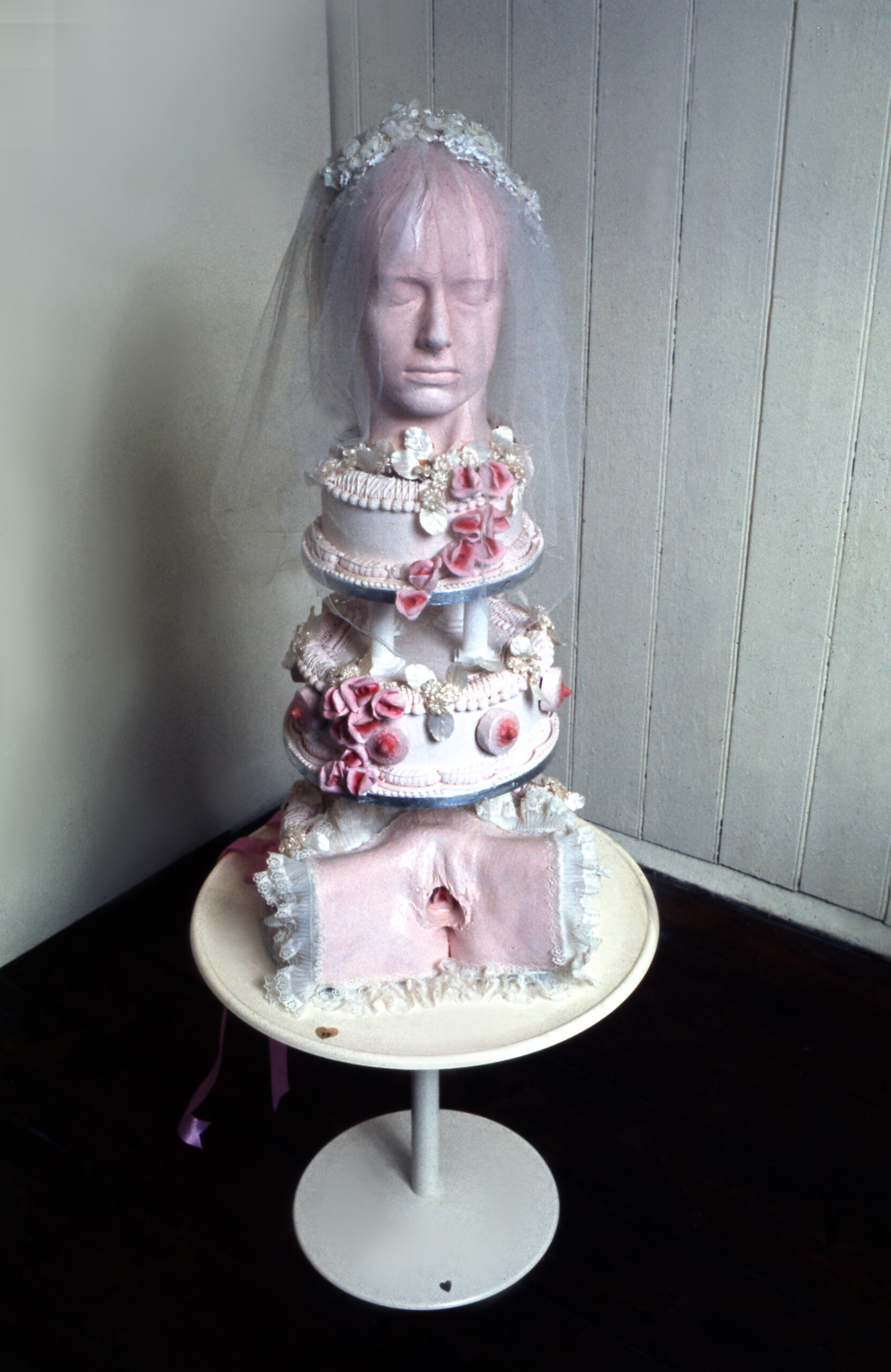Your currently viewing RAW Contemporary | View RAW Modern
What drew you to Surrealism?
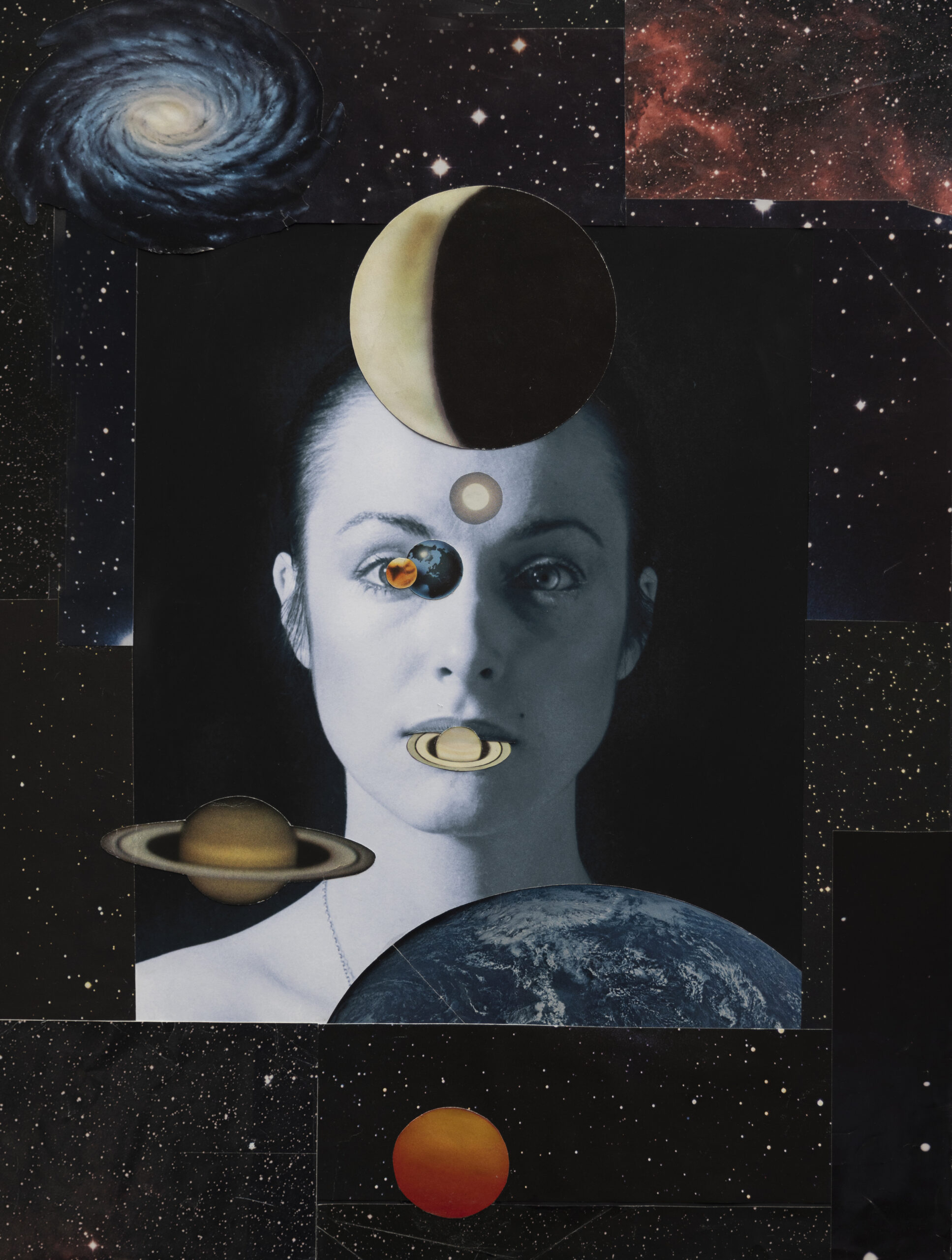
It was while I was still a student at Chelsea College of Art, London. I was seeking a subject for my end of course thesis. We had had a class on Surrealism in Art History, but it was pretty general and perfunctory. In my research in the college library, I came across the collage books of Max Ernst. Seeing them was a revelation for me. I had never realised that collage could be used to create magical, seamless worlds, but here it was.
I had been searching through the history of art as I wanted to find a subject that would reflect my primary interest, the use of the human form, but not in a representational way, in a manner that was symbolic and mythic. I found this in ancient art and art from other cultures, but I wanted a subject closer to my own time and place, and discovered it in Max Ernst’s creations.
I wrote my thesis on Une Semaine de Bonte and La Femme 100 Tetes. I also made an animated film that blended Ernst’s collages with source material and live footage that I shot myself. I created my first book, 50% The Visible Woman as a homage to Ernst and to use the tools I discovered in Surrealism in my own way.
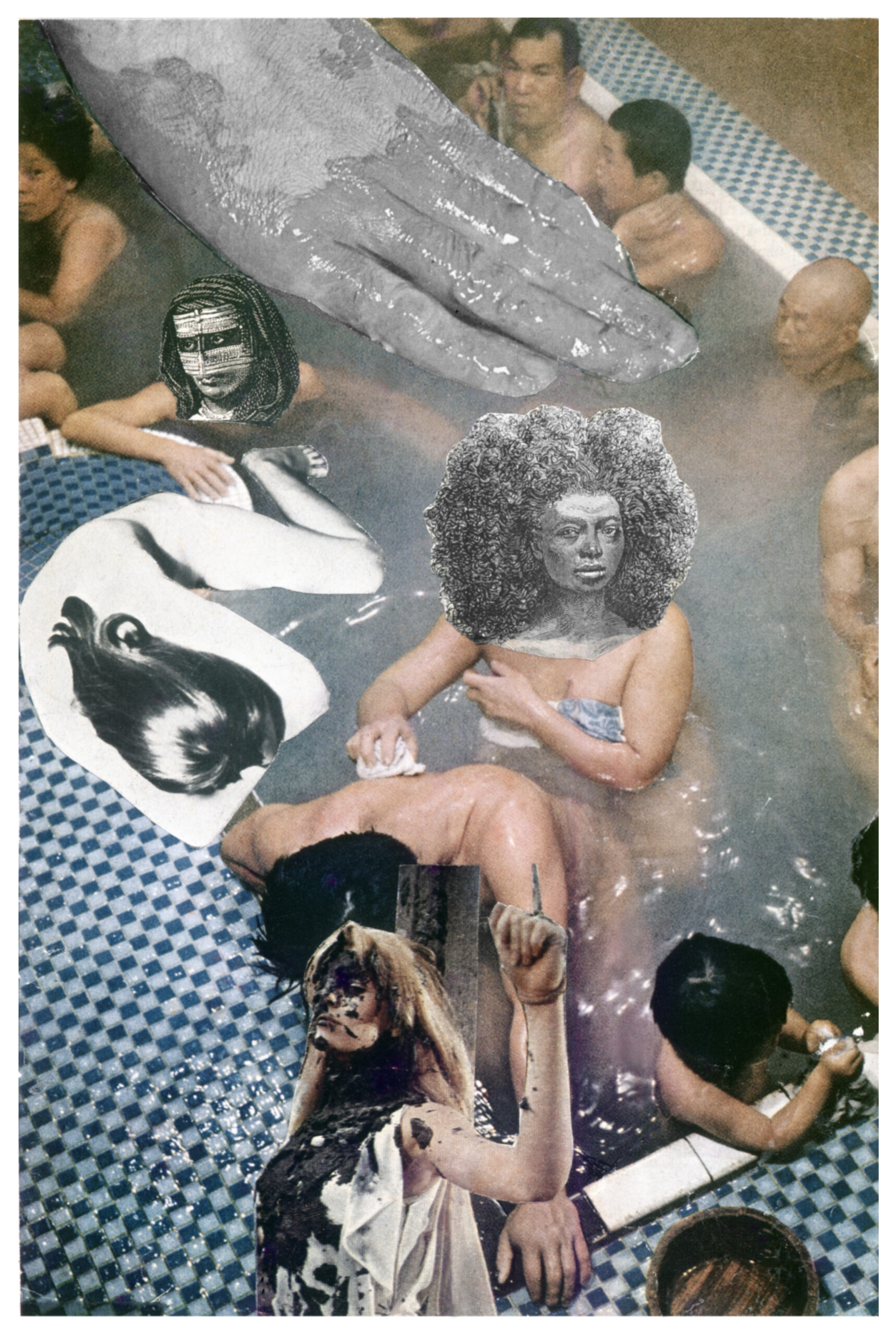
In researching the history of art, I had seen that the female form, often unclothed, was a prime subject throughout. Yet this was generally portrayed by a male artist and seen through his lens. I decided I wanted to use woman as my subject, but as a woman myself, I felt I could show her from the inside out, not just depict her surface qualities. I was drawn to Surrealism as I felt it’s mode, it’s language, was ideally suited to this endeavour. Surrealism is a radical art form as it takes pieces of reality, the mundane world, then reshuffles them and turns the known world on its head with material dredged from the subconscious realms.
What was the most formative time in the development of your career?
The most formative period for me was as a student. I found my subject matter, my mode of communication and my artist style at that time. I was a rather disruptive student as I did not want to abide by the status quo, but wanted to freely mix and integrate approaches of different departments, different media in my work. At that time, that wasn’t really done. Painting students were painters, the sculpture department produced sculptors, and photography worked with photographers. I wanted to freely blend them all. So I did. I had also learned some craft skills at my previous art school (Farnham School of Art) and I brought those skill sets to bear too, as in the case of personally binding my handmade copies of my first book.
I was also interested in performance art and borrowed a 16 mm film camera from the technical college across the road to make my early films. Although I presented a challenge to the staff with my unconventional approach, I graduated with a First Class Honors degree and the head of the department described my diploma exhibition as a celebration because they saw all the elements I worked with come together into a meaningful whole. I also was blessed at this time to have teachers who were the successful artists of the time, mainly Pop artists, like Allen Jones, whose encouragement and inspiration were invaluable.
What series of work are you most proud of?
I tend to work in series and am proud of all the series I have created, as each has its own integrity.
I would say that my An Exorcism series is probably the most recognised at this time, so I will choose that for my answer here. Created over a period of 7 years, it represents an in-depth dive into my personal psychology and the archetypes of my heritage. It is an authentic work of surrealism, psychology and alchemy, presenting the ‘Heroine’s journey’; through the underworld labyrinth of her own subconscious into her rebirthing. It is an example of how art can be used for personal transformation and to provide signposts to others to navigate through their own dark nights of the soul.
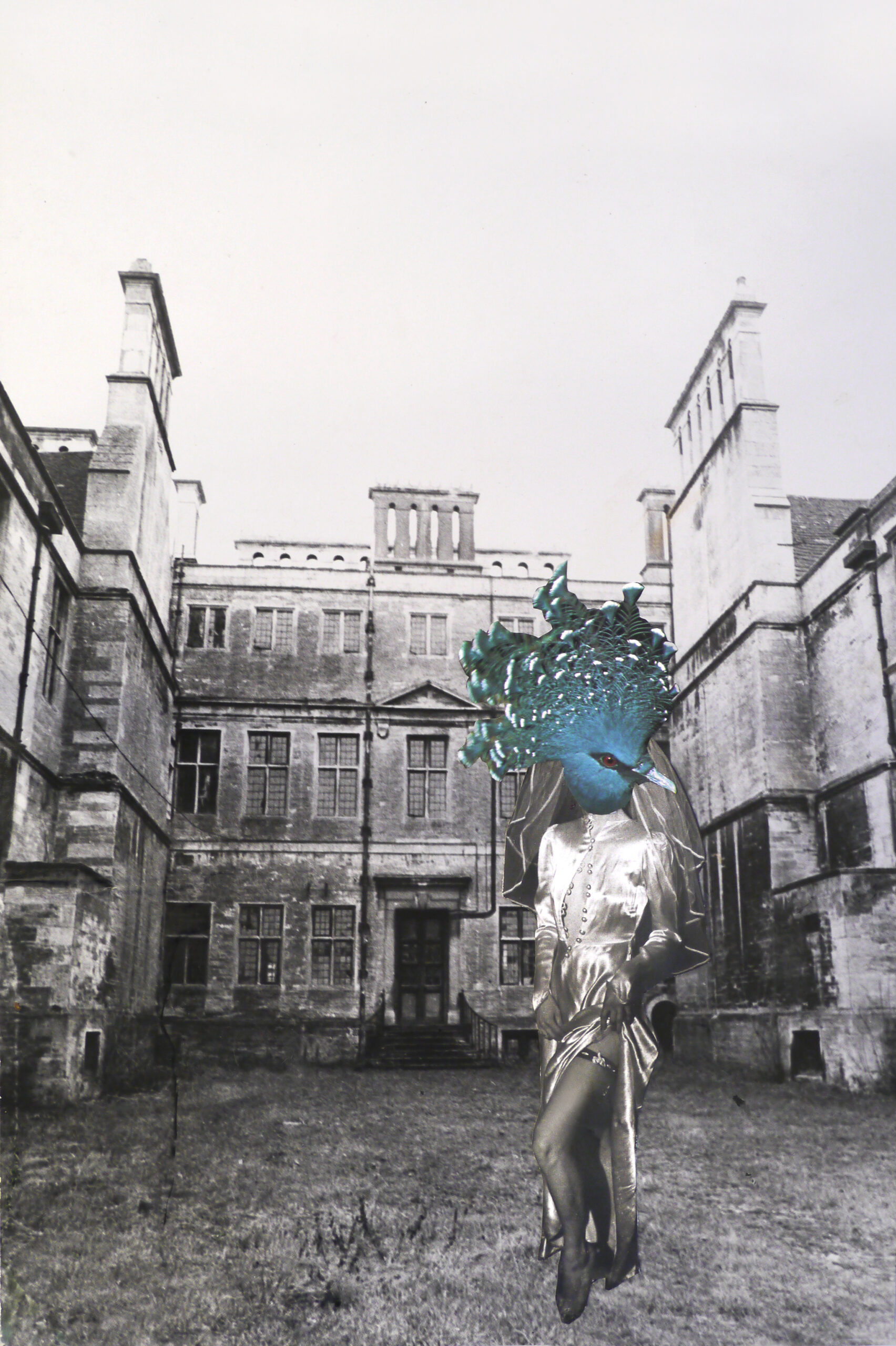
The series is made with photographic collage and most of the photographs incorporated were taken by myself and my partner specifically for the project. I use a derelict mansion house situated in the English countryside (Lilford Hall) as the ‘set’; for this drama. The theme was arrived at when I felt destitute due to the break up of my relationship with film-maker Peter Whitehead and the simultaneous collapse of the all-women theater troupe Holocaust after completing the harrowing film ‘The Other Side of the Underneath’;. I felt bereft and embarked upon the series in order to discover my essence, beyond the machinations of fate and circumstance, and to try and put the fractured parts of my psyche together again. To this end, I envisioned the empty mansion as the vessel of my self and populated each room with aspects of my state of being, seeking to bring all the skeletons in all the closets into the light of day.
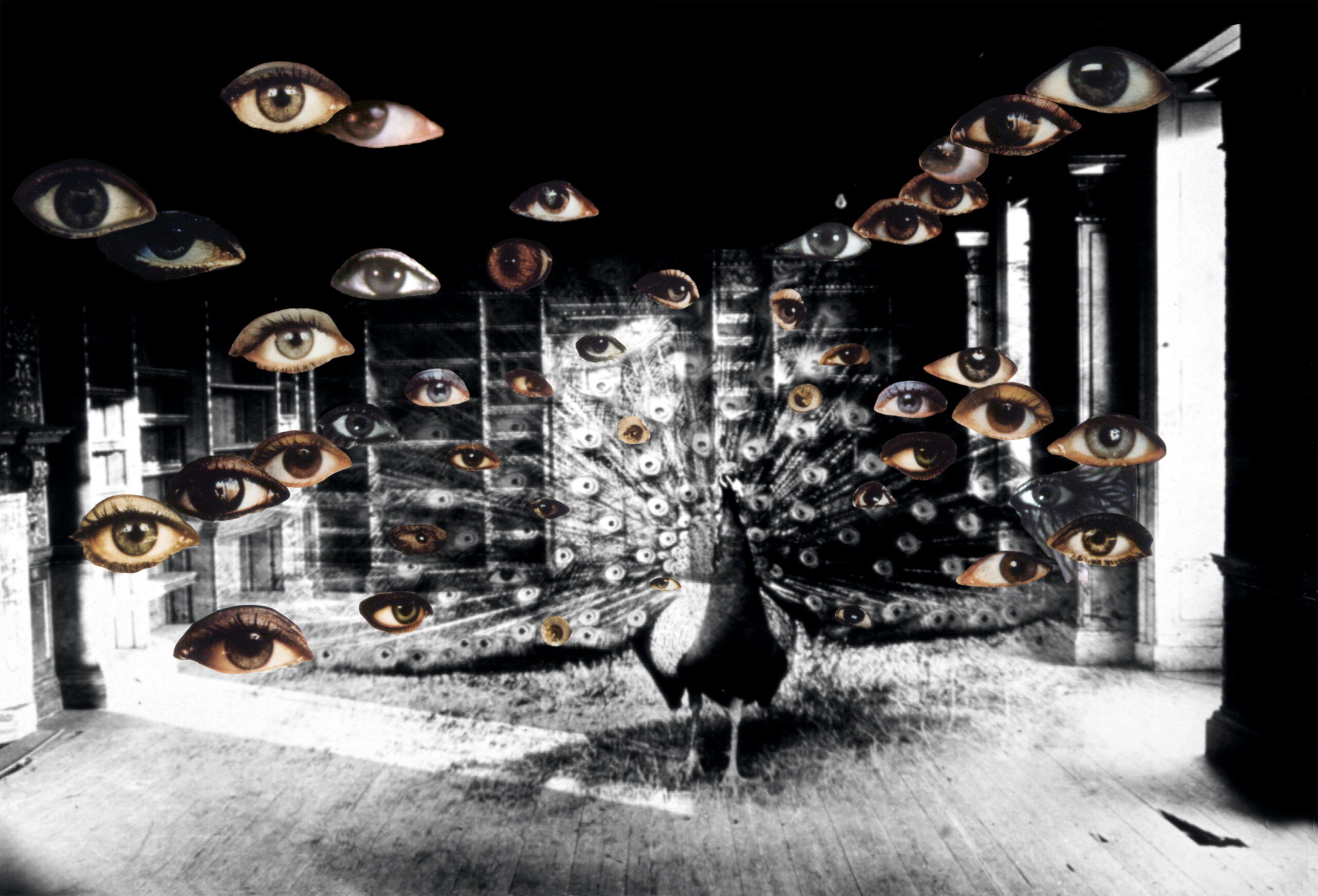
I would like to mention briefly one other series. I do not usually make direct social or political commentary in terms of ‘current affairs’. However, during the pandemic it felt critical to offer a real-time response to what was happening to us, collectively, as a planet. In experiencing a global ‘time out’; I felt it was a unique opportunity for people to look at themselves and their society in a way not generally accessible when in the throws of the rituals of mundane existence. Therefore, I decided to comment with a series of collages and accompanying poetry. Blum and Poe Gallery posted this series in the ‘Musings’ section of their website. I named the series ‘My Body In a Box’; as a subset of my ongoing My Body series, where I am using my body, naked, at this age to convey my body of experience.
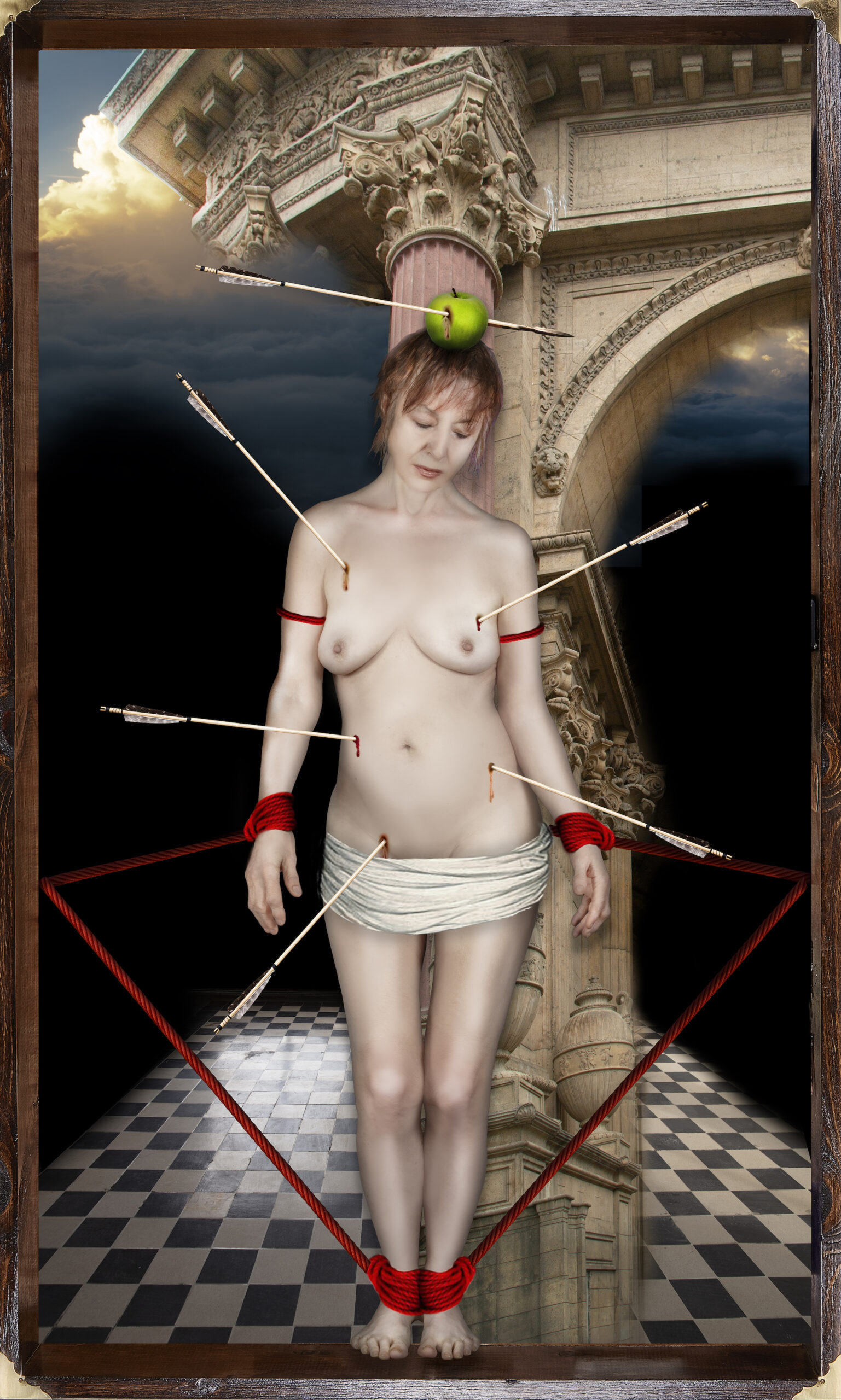
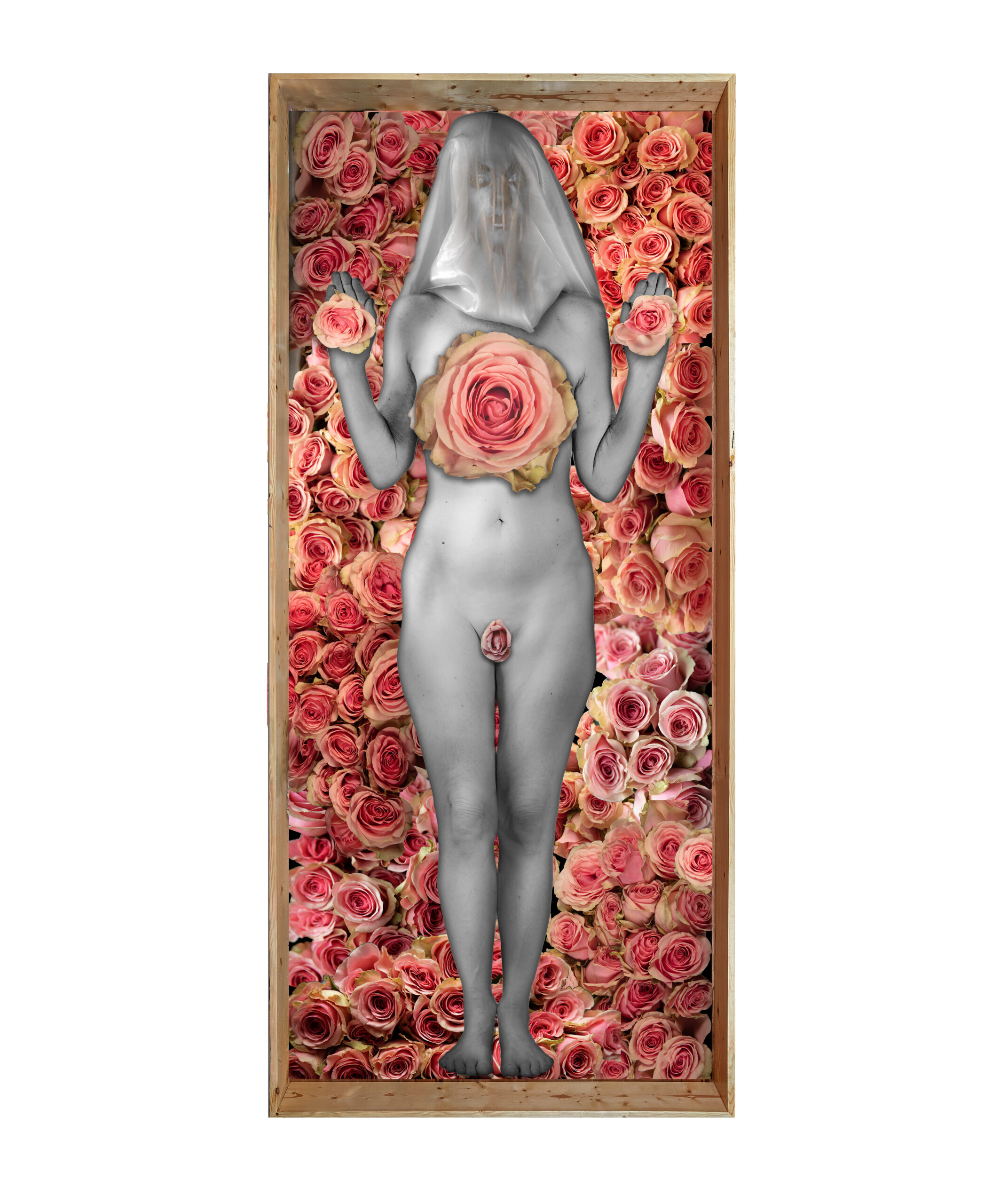
The series attempted to encapsulate what I was experiencing and feeling, aligned with what I sensed to be the collective experience. I wanted to show the fear, the horror and the trepidation, along with potential antidotes to these emotions.
Do you have a preferred medium?
Collage is my medium of choice, whether literally or just in my approach to creation. I like to use recognizable features of the real world, then combine them in new ways which disrupts the status quo and brings new life and energy into these associations.
The collages of Max Ernst that first inspired me were made from old engravings. As I wanted to claim this art form as my own, I chose to use photographic collage. I have also worked a lot with life casts, considering them to be the 3-dimensional equivalent of a photograph, combining them with other elements in my constructions. While living in the Caribbean, I returned to more traditional forms of art making, creating whole series of works in painting, drawing and pastels. Although I was using those mediums, I still approached my compositions as if creating collages, bringing different elements together in new associations. I also like to apply collage principles to combining various media. I find the collage process to be very liberating. It stimulates the innate sense of composition. It encourages the imagination and provides a method to recreate reality in a dynamic, surprising and fulfilling fashion.
Is self-portraiture an important part of your work? Why?
From the time at college when I was investigating my core interest in art, I decided to be my own muse. I agree with what Frida Kahlo once said when asked why she painted herself so much. She said that she was the person she knew best. And so it is. There are many layers to this onion of self-reflection. One is a primary spiritual tenet ‘Know thyself’;. I believe we are here to explore and discover our true nature, so depictions of the self are an important feature in this process. The next, as mentioned above, is the attempt to reclaim the right to show oneself as one sees oneself, not as others see you. Aligned with this is the practice of putting oneself in two places at the same time, subject and object, the witnesser and the witness. I feel this is an excellent exercise in overcoming a one-dimensional view of oneself. It also allows for the next onion layer, a radical and ruthless disassembling and reassembling of the self-image, a more challenging process where one to so uncompromisingly dissect and devastate another being other than oneself. When it comes to self-perception, we have every right to re-juggle the pieces as we may and re-invent ourselves at will. As I have always believed in the multi-dimensional nature of the self, self-portraiture is an excellent vehicle to explore and portray that notion.
Can you tell us more about 50%The Visible Woman?
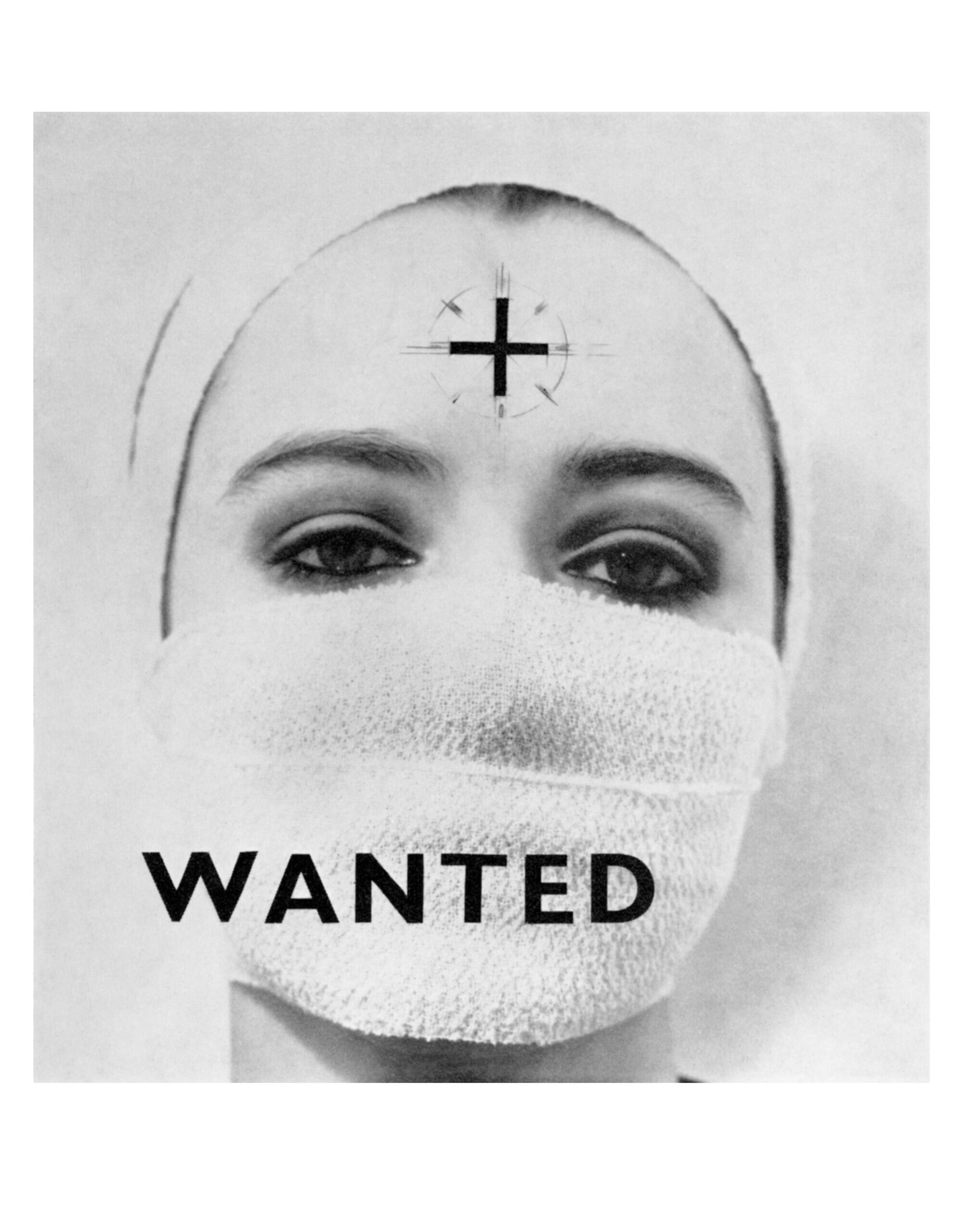
As I mentioned above, the collage books of Max Ernst inspired me to create my first book of surreal collage, 50% The Visible Woman. The title came from the notion that when we view a woman, we are only seeing half of what is there. We just see the outer surface, but inside her, there are worlds within worlds…
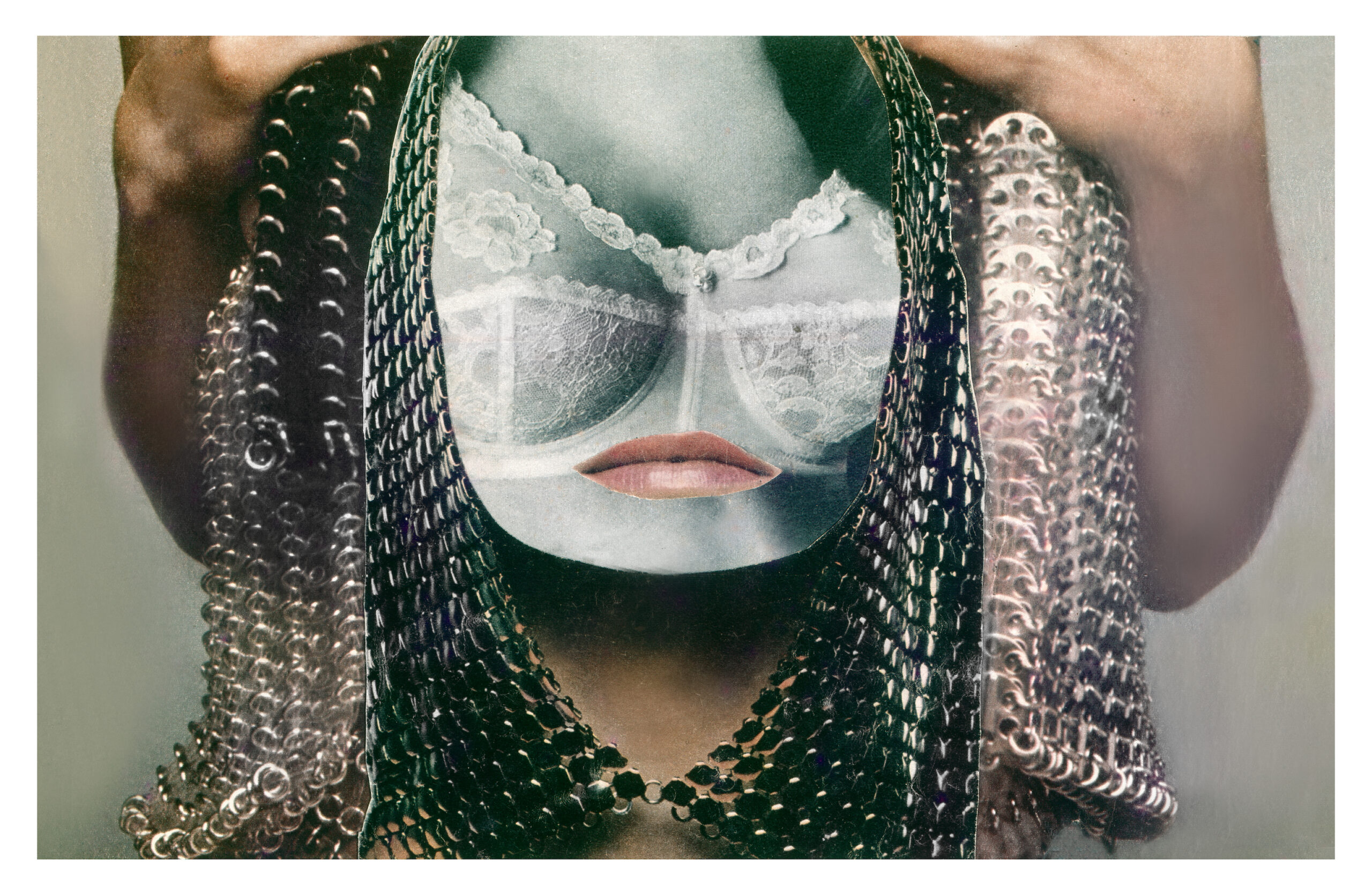
I used an image on the cover from one of the kits called Visible Woman which show the inner anatomy. The book comprised photographic collages and poetry. Over the collages, as a device, I used translucent paper overlays with the poetry on them to create a sticky link between words and images. I freely blended photographs I took, and photos taken of me, with material I sourced from books and magazines. I wanted to depict how a woman is seen in popular culture and how she sees herself. I sought to shock people into a new kind of recognition. I wanted to show what it looked like when a woman was the subject of these works, not just the object depicted in them. I made three hand-bound copies of the book for my Diploma exhibition. Two years later, the book was published by Narcis Publishing, an imprint created by my then-partner, Peter Whitehead. A review by Rolling Stone ventured that the book would be as ‘important on your bookshelf as Sgt Pepper is on your record rack’.
What has been your biggest challenge as a woman artist?
I have encountered many challenges in my long career as an artist. Some related to being a woman, and some just related to being an artist. It’s not an easy path and not for the faint-hearted! Of course, the role of the artist is somewhat feminine in its very nature. I don’t know if I can distinguish the most significant challenge from the multitude! However, I can cite one typical example. In 1982 I had my first solo exhibition in New York. Three different powerful and wealthy men showed interest in purchasing a number of artworks. However, when they found that I did not come with the work, none of them bought anything. I still face so many challenges on a daily basis. But I have never been one to shy away from a challenge and, battered and scarred as I may be, I am still there on the frontline. One of my challenges currently is taking on the scourge of ageism. When our sexual magnetism fades, we, as women, tend to become invisible. I am not ready for that. In my wise woman years, I know I have so much to offer from my wisdom of experience, so I am fighting to break through this, the next glass ceiling of feminism. So every platform that opens up for me to share, to be visible, I welcome with open arms as an integral part of my art practice. Thank you for offering that here.
How do you feel the reception of your work has changed over time, especially with more erotic
subject matter?
In the late 1970s, thousands of my third collage book Mountain Ecstasy were burned by British Customs when they were coming into the UK from the printers in Holland. It seems the officers were unable to distinguish pornography from its alchemy. One comment in the visitor’s book for my 1977 Secrets exhibition in London read: ‘Congratulations on being the first woman to have vagina envy’. So, although writer Laura Mulvey was able to see that I was mining an important field, the little-charted lands of female fantasy, in her article in Spare Rib of 1973, (referring to my Opening Exhibit), she was in the minority.
In our current climate, many female artists are choosing to express themselves through their bodies. The female liberation movement has broadened its scope to include body awareness and the right to pleasure. In the earlier days of the movement, it was not so, and I was viewed as a renegade, and perhaps a ‘sell out’ for owning my sexuality and sensuality and presenting it, unabashed, in my art. Now feminism has come of age and is much more inclusive of all aspects of our beings. By this token, I have willingly accepted being termed feminist (feminist surrealist) in a way I was not able to claim before. As for the reception, only time will tell whether my role will be recognised and its significance recorded in the annals of time.
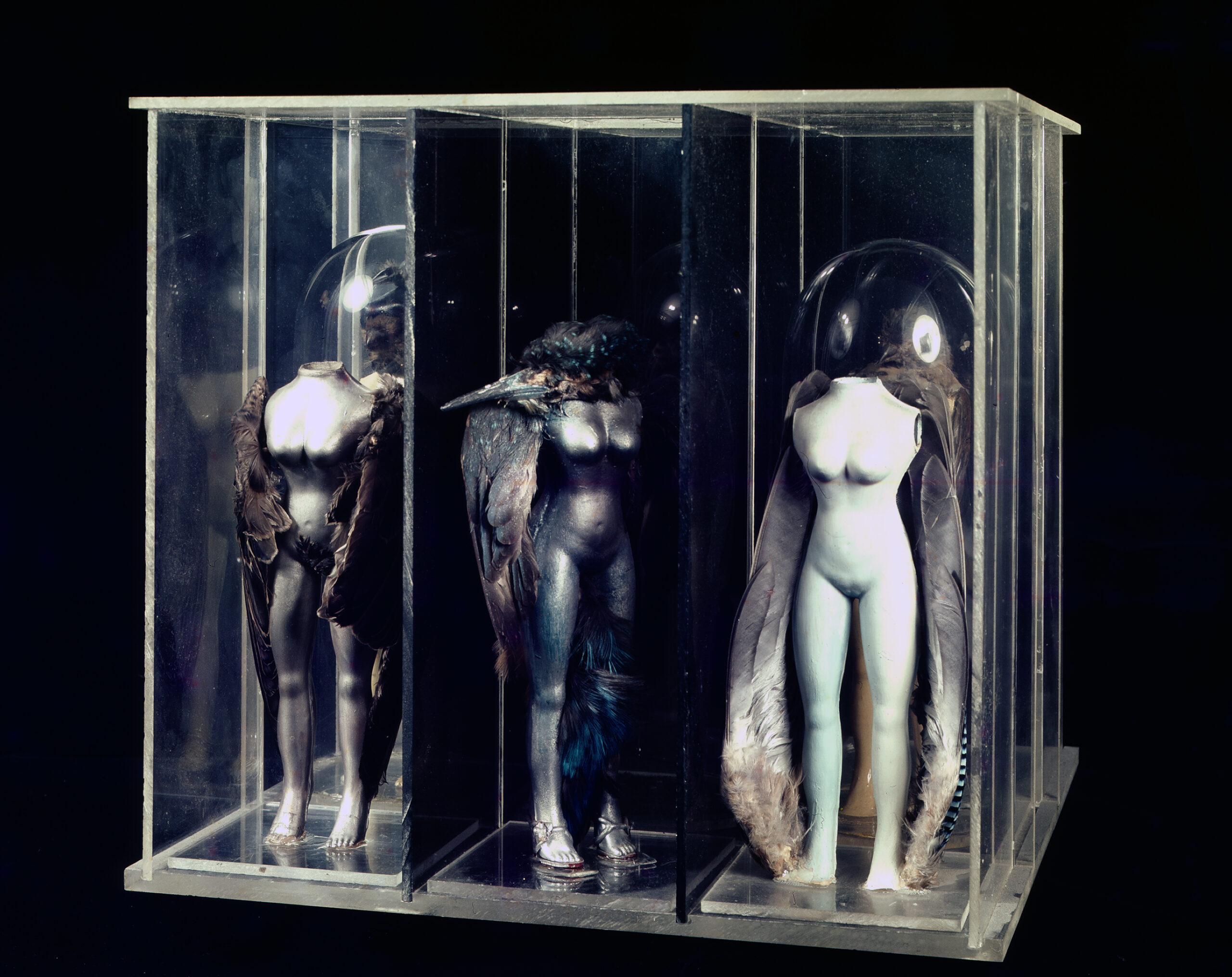
Do you feel your work could fall under the label of “social justice art”? If so, why?
I hate labels, and boxes, of all kinds, so I probably would never be keen on being defined as such. However, I do claim a place in the liberation of the feminine, as that has been central to my whole practice. The equality of woman is a basic right that we have been deprived of for so long, so it is definitely a core touchstone of social justice. I am also a great exponent of our right, as humans, to realize our full potential. Social structures and cultural complexes often conspire to disallow this basic right, due, no doubt, to the misconception that people need to be forced into certain roles and slots in order to ensure productivity. I proclaim it a misconception as we are our most productive when we are able to do what we love.
I find that art that is motivated by any kind of propaganda, tends to suffer aesthetically from that choice. However, art that is naturally imbued with its own internal message can be powerful and liberating, beautiful, shocking and transformational. Not much point just recording what is, but revealing what could be is where the real juice is to be found. Often that kind of art can be disturbing and disruptive, but then the shell must be broken if we are to discover the precious goods within. So, I have attempted to create my life and art as an example of someone who chooses to be themselves, who marches to the beat of their own drum, rather than conforming to the mores society lays out for us. This is one of the reasons, apart from my own ability to fulfill my mission in life, that I need to be seen to succeed. If I do not succeed, materially as well as spiritually, people will not see this as a viable blueprint to adopt for their own lives, so they will still be left in shackles.
Who are your three biggest inspirations?
Max Ernst, Jean Cocteau, Frida Kahlo.
This is hard to answer as there are many threads and flavors in the fabric of inspiration that have ignited me as an artist. However, I will choose three, as requested, that represent a larger buffet, but are key in what they represent in my mandala of art.
Firstly, Max Ernst. I have described above how the discovery of his approach to collage set the tone for my own creations so impactfully. I had been searching for where I fitted into the story of art. Once I discovered his work, I knew I was part of that lineage of surrealism and heir to that approach to making art. I just wanted to adapt it so that I could express the nature of the feminine psyche, in all her forms and fascination.
Jean Cocteau is a good choice to represent my deep interest in the medium of film and the inspiration certain kinds of film making gave me. Blood of a Poet was a particular favorite, where the scenes of passing through to the other side of the mirror and of bringing a statue (Lee Miller) to life, resonated with me in every way.
Frida Kahlo takes pride of place as my favorite female artist. But it is strange because I never really discovered her work until later on, after I had created a lot of artwork that had much in common, in a very deep way, with her approach to making art. So, it was not as if I saw her artwork and that inspired me to make mine, it was more a case of me making work that I discovered had much affinity with the work she had made. A willingness to engage in radical self-scrutiny is what we really have in common. As an icon of someone able to overcome immense challenges and create such intimate art with powerful, universal resonance, she is an inspiration to us all.
Can you tell us about any upcoming projects?
My main focus currently is creating a mega collage of my whole life. This is the process I am immersed in putting my archives together. I am digitizing and organizing my life’s work. It is a fascinating process, which I can recommend to anyone who is interested in understanding the nature of the self. As I review everything, I claim each facet as part of myself. So much understanding spontaneously arises in the process, so many lights switch on about the connectivity between the many aspects of my creative path. I am trying to make a map of my journey that will be accessible and comprehensible. I am very interested in leaving this legacy because it weaves together so many threads in a tapestry of the evolution of consciousness, culture, media and the liberation of the feminine. I sincerely hope I will find the support to complete this process in the way I envision.
